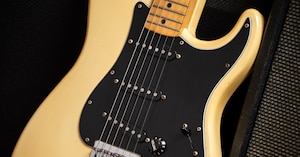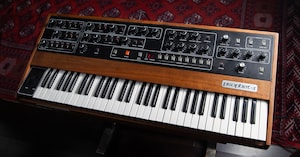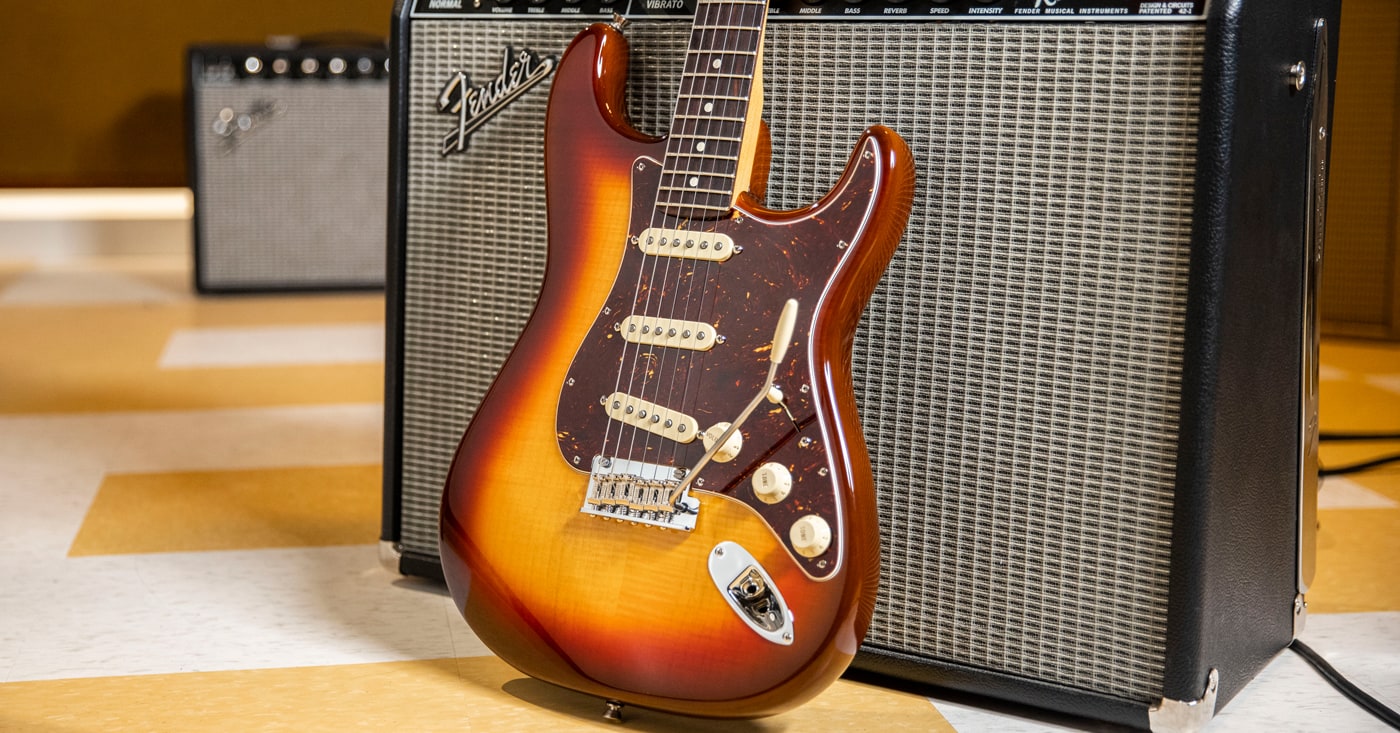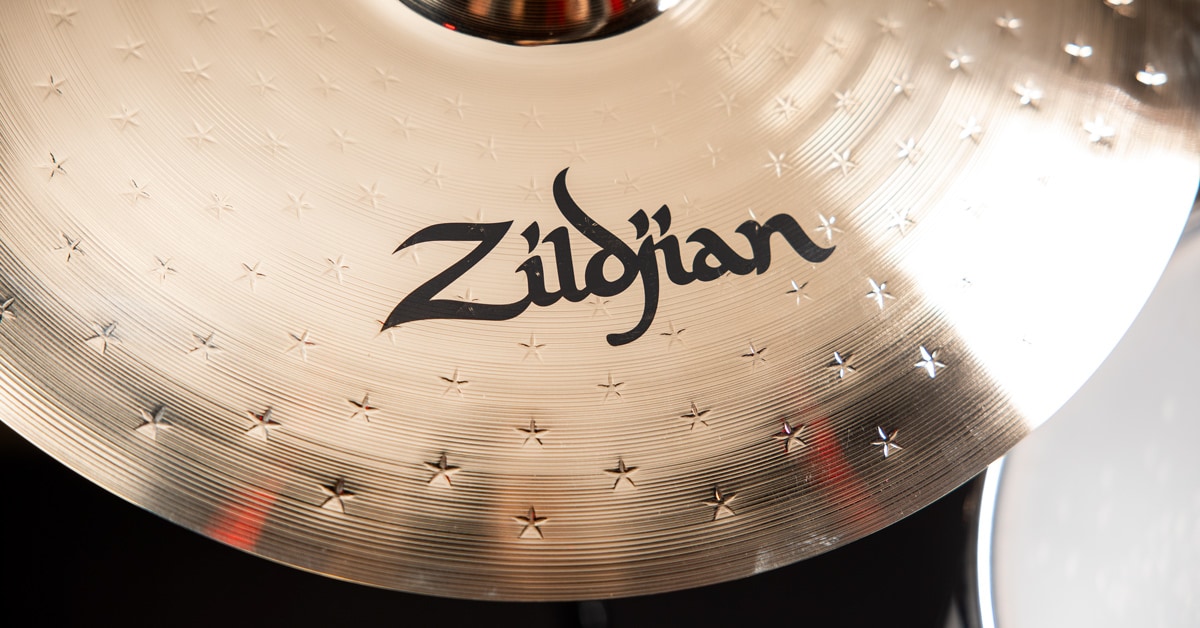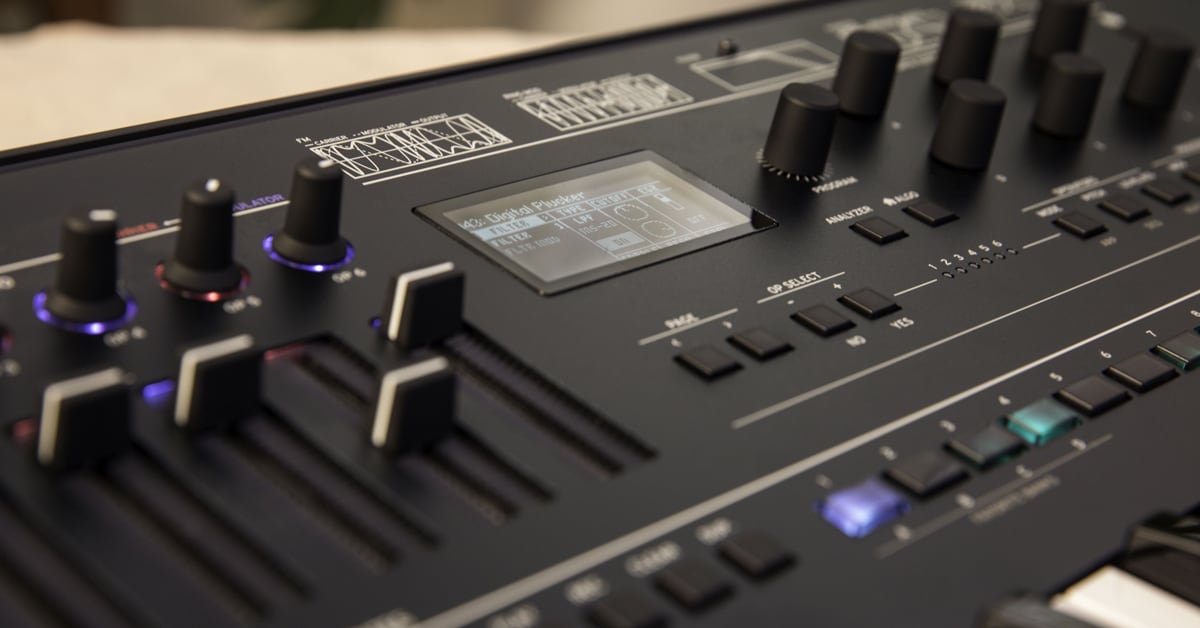In the 1960s, virtually all synthesizers used subtractive synthesis, an expensive process that resulted in towering modular beasts that cost more than a car. At the same time, John Chowning, a composer with a doctorate from Stanford University, looked for a different way to generate sound. While using the mainframe computer at Stanford's AI laboratory in 1967, he discovered frequency modulation synthesis, also known as FM synthesis. This method used sound waves to modulate other sound waves. The results were stunning. With just a few waves, FM could generate anything from pleasing tones to aggressive noise. But due to the limits of computing in the ’60s and ’70s, FM didn't appear in an instrument for more than a decade.
Then the ’80s hit. Everything was going digital. Many manufacturers designed hybrid synths, combining the stability of digital with the sonic qualities of analog. In 1983, Yamaha went completely digital with the DX7, a synth based on the FM synthesis discovered by Chowning and licensed from Stanford. Computers had finally made synthesizers affordable to the masses. More digital FM synths came soon after, like the KORG DS-8, and the bright, glassy sound of frequency modulation became the sound of an era.
In the decades since, KORG has continued to use FM in creative ways. Their MOD-7 synth engine is built on FM synthesis and can be found in their Kronos workstations. KORG volca, their endlessly fun series of portable synths, includes a popular FM model. And most recently, KORG released opsix, an “altered FM” synth that begins with a classic six-operator engine, but also pushes FM into new territory. We talked to James Sajeva, senior brand manager at KORG USA, about this exciting new synth.
For those who may not be familiar with FM synthesis, what are the hallmarks of its sound?
You have heard FM, even if you don't know it. While it's been around in both analog and digital iterations since the ’60s, FM really hit its stride in the ’80s, and you can hear its distinctive electric pianos, basses, pads and leads on literally thousands of songs. Yet, as ubiquitous as FM was, it was equally tough to program. This was when digital was the new kid on the block amidst a sea of analog, and its menu-based UX and sonic structure proved challenging for many. As such, presets are what you will hear in most productions.
That is also one aspect of FM that I personally find so exciting: It's so deep, yet only a fraction of users have explored its depths. It's rather like the Mariana Trench of synthesis. FM is vastly capable of creating complex, moving and yet-undiscovered sounds.
At a high level, what is FM synthesis and how does it work?
FM is an acronym for “frequency modulation,” and at the bottom of it all, that is exactly what is going on at any point. The simplest way to understand this is to remember that the frequency of an “operator” (or oscillator) determines its pitch. Frequency modulation is just another way to say pitch modulation. So, in basic terms, FM is just like vibrato—but at very fast audio rates.
Digital operators can be set to create sound (as “carriers”) or modulate the frequencies of the operators that create sound (as “modulators”). This harmonic—or inharmonic if desired—relationship delivers unique sounds often described as metallic, resonant, glassy, silky, etc.
So, at its most basic, frequency modulation occurs when an operator is combined with others or fed back into itself, and this can happen up to six times over on a true "six-op" FM synth. The operators can also be arranged in different configurations, called “algorithms.” From there, you have subtractive components, specifically a somewhat unique envelope structure that lets you shape the total output as needed.
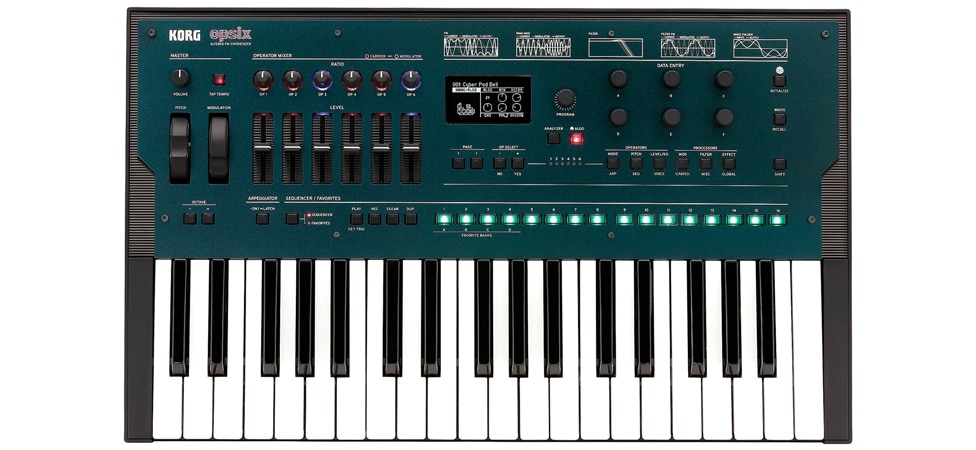
Pictured: KORG opsix Altered FM Synthesizer
How does the “altered FM” engine in opsix differentiate itself from the FM synthesis of the ’80s?
Altered FM is far more than just an update of established FM technology or sounds. In fact, it's equally capable of producing modular-style sounds. Since every operator can function as either an oscillator, filter, wave folder or ring mod—in addition to FM—opsix has just as much in common with a well-stocked Eurorack as it does with classic FM synths.
opsix combines these new sound creation capabilities with 32 notes of polyphony, the most of any FM hardware synth currently available, with up to eight-voice unison, 40 algorithms and the ability to create your own (classic FM products had 32 algorithms with no customization). You’ve also got deep virtual patching, multiple filter models, triple multi-effects processing and comprehensive note and modulation sequencing.
Even with this level of sophistication, well beyond classic FM, it's all still very much within instant reach. One of our major focuses was to assure that anyone can explore FM's depths and create their own sounds with minimal effort.
Let’s talk about that a little further. One of the biggest pain points with FM in the ’80s was the programming experience. How did you address that here?
We brought the most powerful attributes of FM to the surface, naturally. Take a quick gander at the panel. You’ll immediately see the mixer that controls each operator's ratios and intensities, along with a button that provides instant access to the 40+ custom algorithms. If we just stopped there, the edits you would be able to make in a short time would still be profound, with minutes of tweaking, not hours of programming.
There’s probably a good amount of musicians who have had their first hands-on FM experience with volca FM. Do these two instruments share any DNA?
There are definitely some fundamental similarities here. Like opsix, volca FM does a fantastic job of putting FM in a powerful and easy-to-use format. They also both have note and motion sequencers, and both will read legacy SysEx files, should you want to load in some additional FM libraries. With decades of vintage FM libraries available for free on the internet, there's a lot of exploration possible beyond either instrument's presets.
opsix offers over 10 times the polyphony of the volca, plus USB MIDI, 37 full-size keys, the additional modulators, extensive envelope and filter implementations, a triple multi-effects processor, the all-at-once operator mixer, and so much more. In short, if you like volca FM, you are simply going to love the opsix.
Let’s dig into the additional operator modes. Can you break each of them down for us?
Each mode has a unique sonic signature, and, as part of altered FM, each takes FM sounds to entirely new levels. Here's a super-simple breakdown:
FM is the classic method. The simplest way to explain it is to liken it to an ultra-fast LFO set to pitch; a modulator oscillates to raise and lower a carrier's pitch. Sweeping through the modulator's ratio with the mixer knob will quickly give you a vast range of tones that are the basis of FM sound.
Ring modulation is basically an ultrafast tremolo. Input signals from the modulators can be multiplied with the carrier to change the amplitude of the signal. You can add a lot of overtones with this option as well. This gets you a great range of "bell-type" and "metallic" tones quickly.
Filter is just that: a filter, but with a key-tracking function. The cutoff frequency is synced to the oscillator pitch. You will immediately hear sub tones that are perfect octaves of the carrier at lower ratios, and at higher ratios, you will hear bright overtones. The opsix features a multi-modeling filter that includes models of signature filters, such as MS-20 and PolySix, plus various high, low and bandpass/reject options. This is also another strong attribute of altered FM, as classic FM synths didn't have filters at all.
Filter FM applies one or more modulators to the operator's filter cutoff at audio rates. This is easy to hear when you set a filter FM operator's resonance at, or near, maximum. Sweeping through the modulator ratios here will yield a ton of different sounds, but with a much different character than the standard FM or filter modes. Extremely low modulator ratio frequencies will create wah-wah and chopped effects.
Finally, wave folding, first found in West Coast synthesis, is a distortion type with special characteristics that resemble signal clipping and produce unique harmonics. A quick sweep of the mod knob here will give you something like a clav but quickly gets into very aggressive tones that will easily serve as the basis for cutting leads, basses and stabs.
opsix has a spectrum analyzer and an oscilloscope. The oscilloscope, in particular, has become a bit of a KORG hallmark over the past 5+ years. What was the impetus for adding it?
Seeing sound can be instrumental, in addition to being educational, and let's face it, just plain fun. Being able to associate the waveform you hear to what you’re seeing on the screen helps familiarize you with what is actually going on in the synth. The spectral analyzer is also a perfect addition to a synth built around frequency modulation.
There seems to be an emerging family of digital KORG synths—Wavestate, opsix and the recently announced Modwave. Outside of the similar form factor, what would you say ties these together?
In every aspect, each model in this growing family aims to reimagine a unique-sounding, classic synthesis method, while also giving never-before-seen “access” to that synthesis.
Our goal is to help players take hold of these distinctive sounds and really make them their own. We all know that stopping to “program” a sound can take away from the creative process. We focus on providing instruments that are so easy to control, the interface almost disappears, letting you focus squarely on the joy of music creation.
Speaking as a player, what do you love most about opsix?
Having spent considerable time with it, both in the home studio and on product live streams, I keep coming back to how easy it is to dive so deeply into FM. I also like that no matter what gear rotates in and out of my studio, adding FM has provided a completely new timbre for my productions. Among my favorite sounds are 103: Fog Pad, 123: Membrane Pluck, 134: Zen Chime and 218: Fis Drumparts (with the arpeggiator ON). With so much sonic diversity, opsix is one instrument that will stay in my rig indefinitely.


